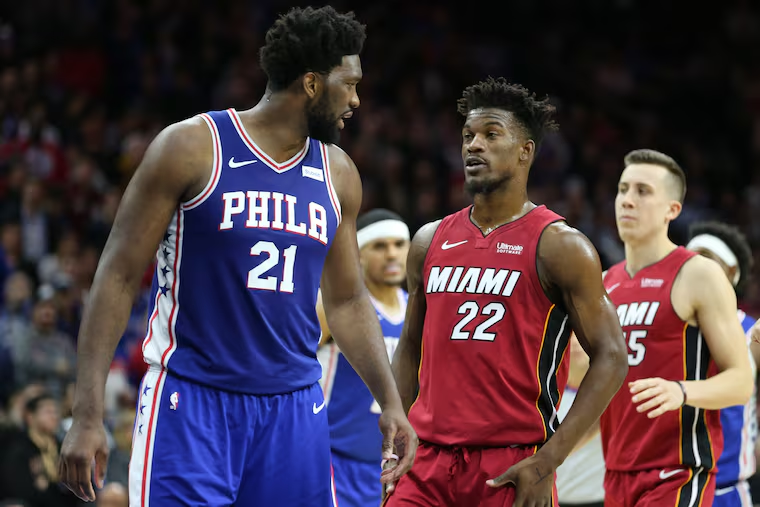Sixers Philadelphia 76ers and NBA news and analysis from The Philadelphia Inquirer..
Link copied to clipboard
Link copied to clipboard
‘Tobias Harris over me?’ Reflecting on Jimmy Butler’s Sixers legacy as he returns to NBA Finals
Jimmy Buckets and Joel Embiid clashed — Embiid wanted to be traded — but they became pals. Butler's won the conference twice since. Embiid can't get out of the second round. Why? Ben Simmons.
